 Page 1, The Times, May 6, 2017
Page 1, The Times, May 6, 2017
Words fail me.
 Page 1, The Times, May 6, 2017
Page 1, The Times, May 6, 2017
Words fail me.

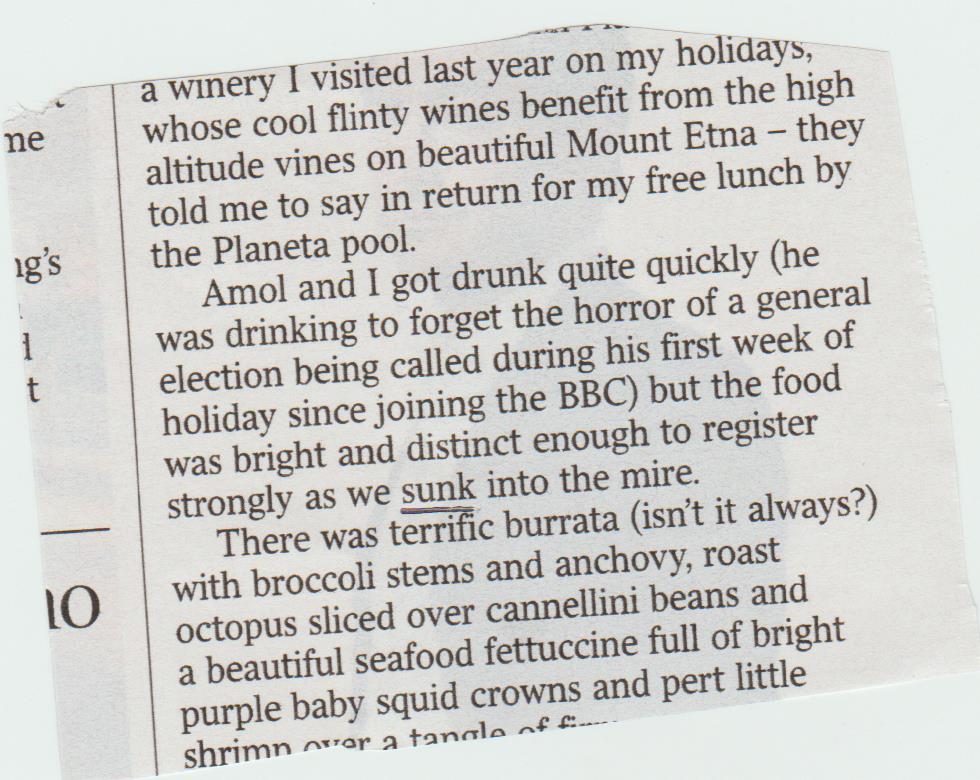 The Times, May 6, 2017
The Times, May 6, 2017
‘Sunk’ is the passive voice of the verb ‘to sink’. Examples would be ‘We’re sunk’ or ‘the ship was sunk by a torpedo’. This sentence requires the active voice, ‘as we sank into the mire’.
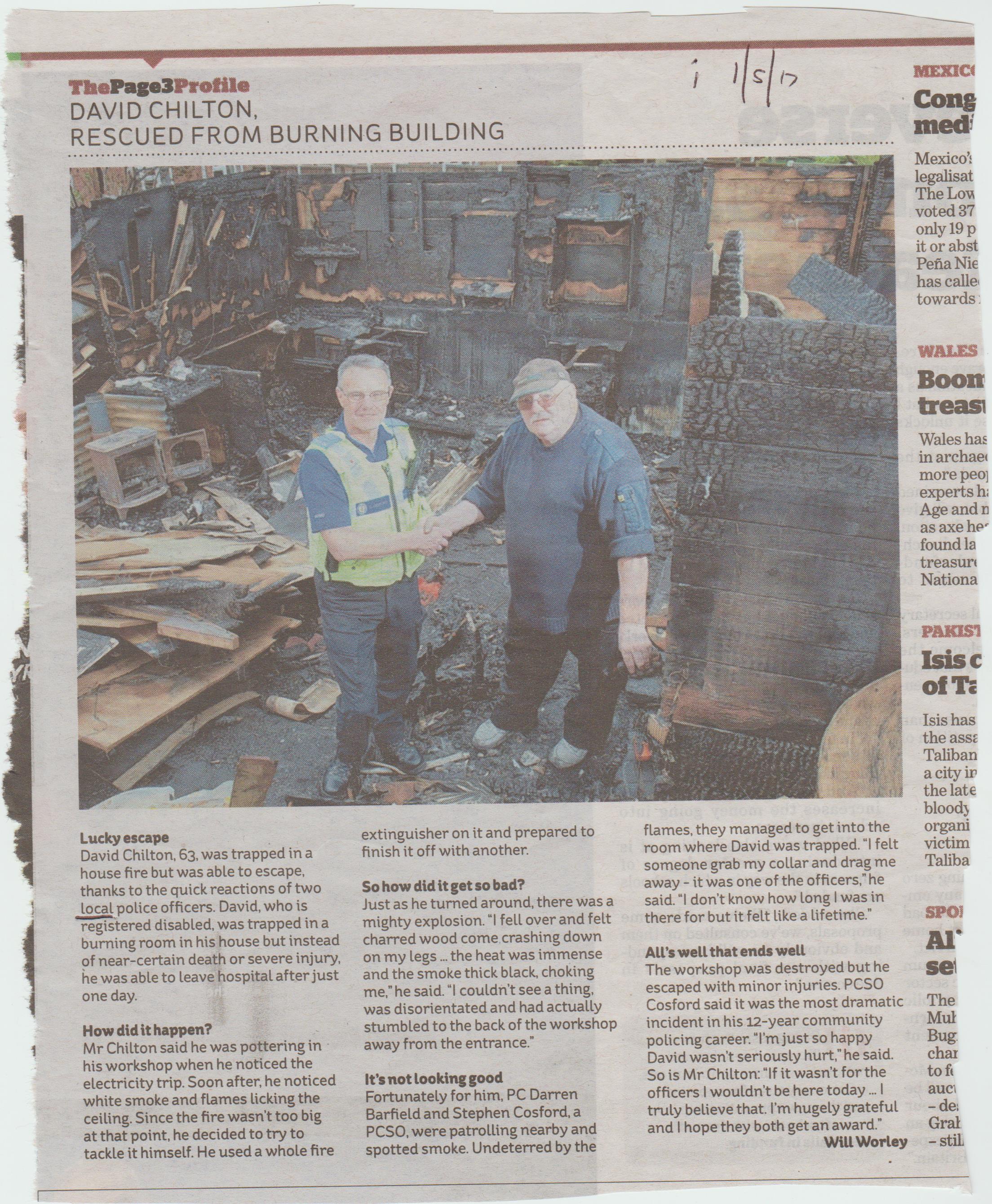
i newspaper, May 1, 2017
First, this story fails to mention where the incident happened. (It was Wolverhampton.) Second, ‘local’ is one of the most common superfluous words (others include ‘special’ and ‘up’). Of course the police officers were local. No reader would imagine they had dropped in from Manchester. And assuming that one of the officers is pictured with the survivor of the fire, which one is it? The reader should not have to assume or guess.
As I mentioned in the previous post, ellipses, or three dots, should be separated from the preceding word and each other by spaces, thus . . .
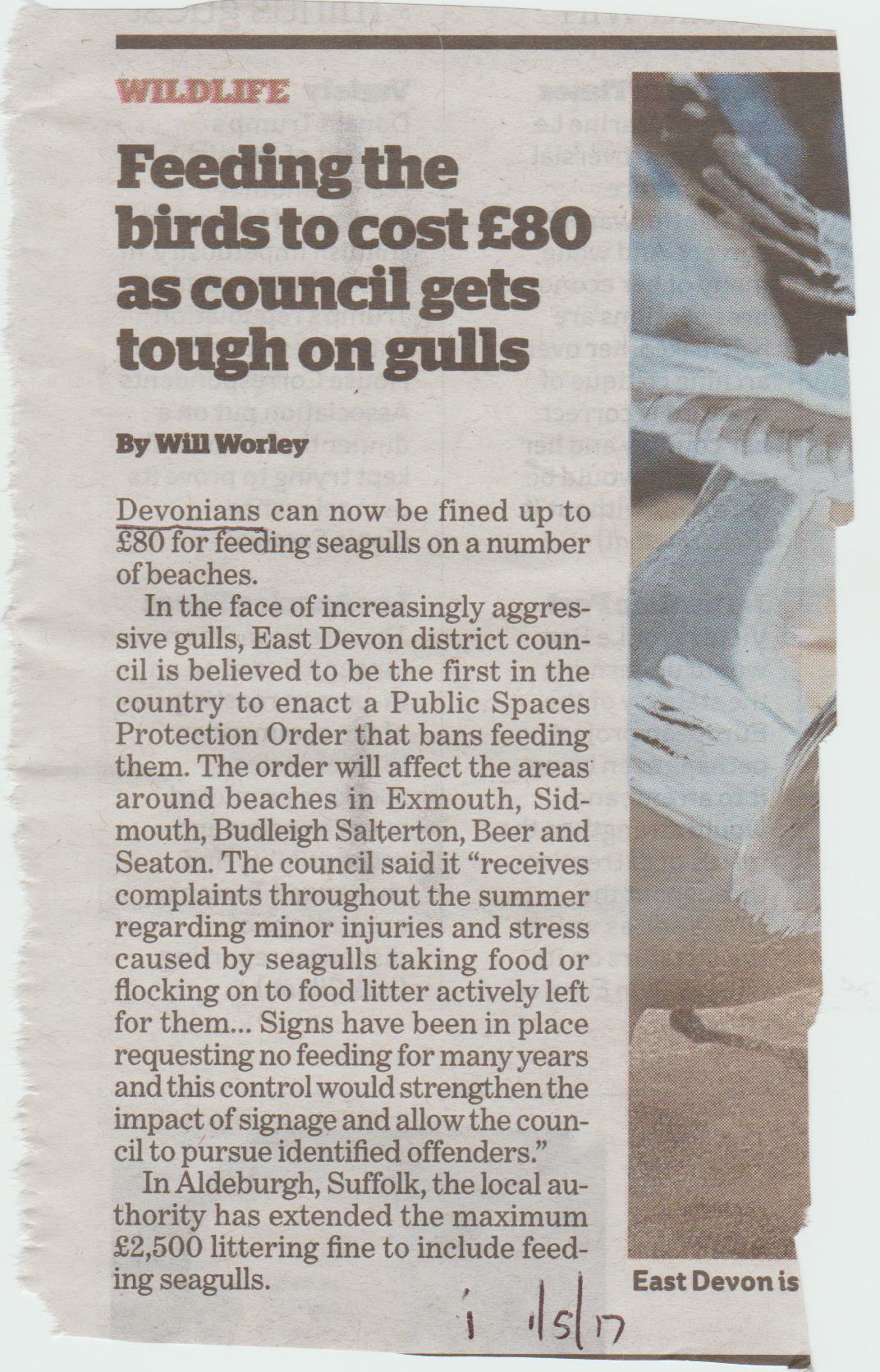 i newspaper, May 1, 2017
i newspaper, May 1, 2017
Devonians?! That is not a word to start a story with, unless you want to signal to everyone who does not live in Devon that they need not read on. In any case, it is wrong. Anyone feeding gulls may be fined, not just Devonians.
This would be my suggested intro:
Feeding the seagulls which flock round popular holiday beaches in Devon could now result in an £80 fine.
This story includes ellipses, or three dots. These should be separated from the preceding word and each other by spaces, thus . . .
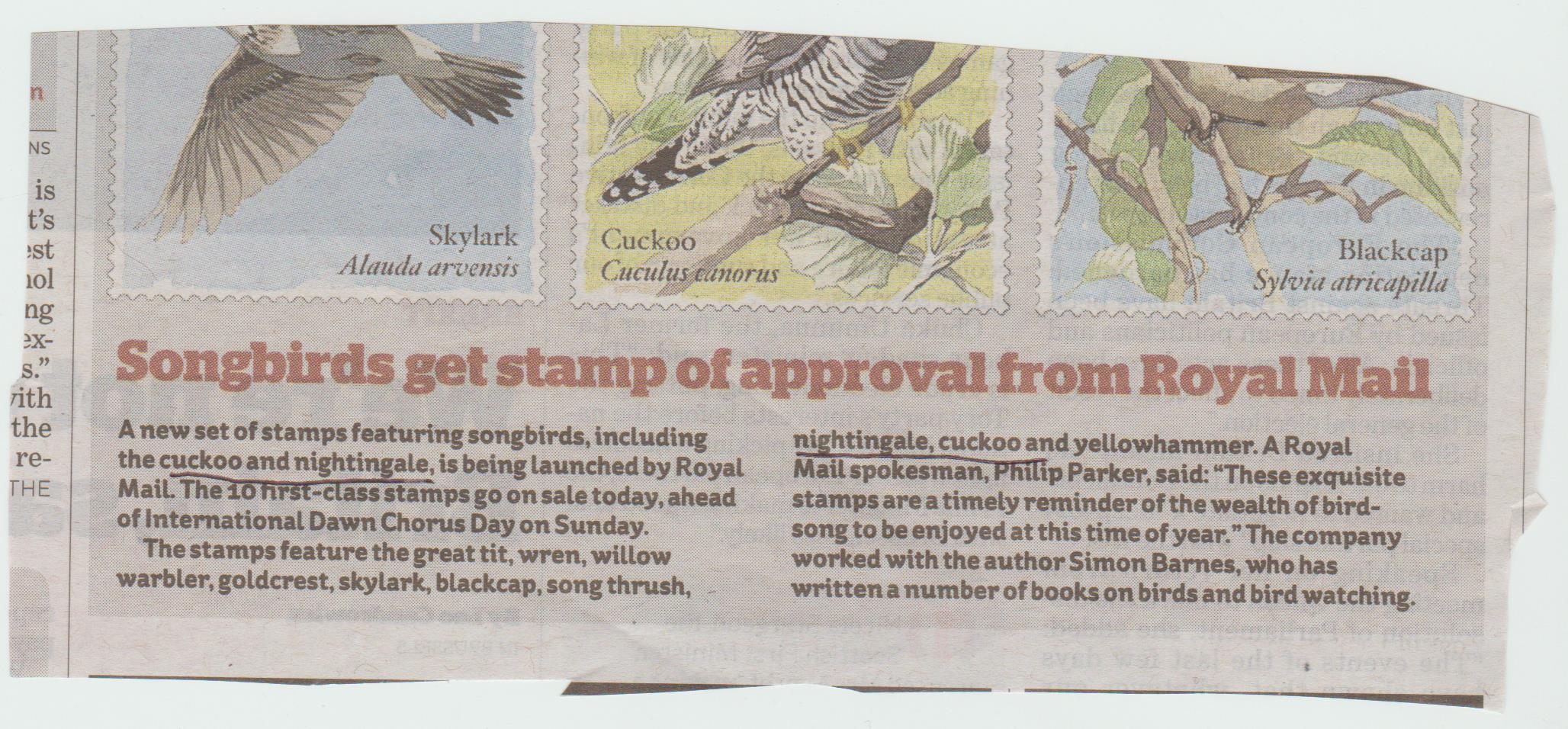 i newspaper, May 4, 2017
i newspaper, May 4, 2017
I think I have seen this ‘stamp of approval’ heading more times than any other, even ‘snakes alive’, ‘unholy row’ and ‘doggone’. It falls into the category of settling for the first banal thing that comes into your head. And ‘get’ is a horrible word. ‘Win’ would be better.
Here is an idea:
The songbirds heading for your letterbox
If you pick out examples from a list in the intro, you don’t repeat them. You say ‘The other birds featured are . . .’
I would prefer ‘Philip Parker of the Royal Mail’ to ‘A Royal Mail spokesman, Philip Parker’.
If the pictures are so exquisite, wouldn’t it be nice to give the artist a credit? A quick glance at the internet reveals that he is Italian Federico Gemma.
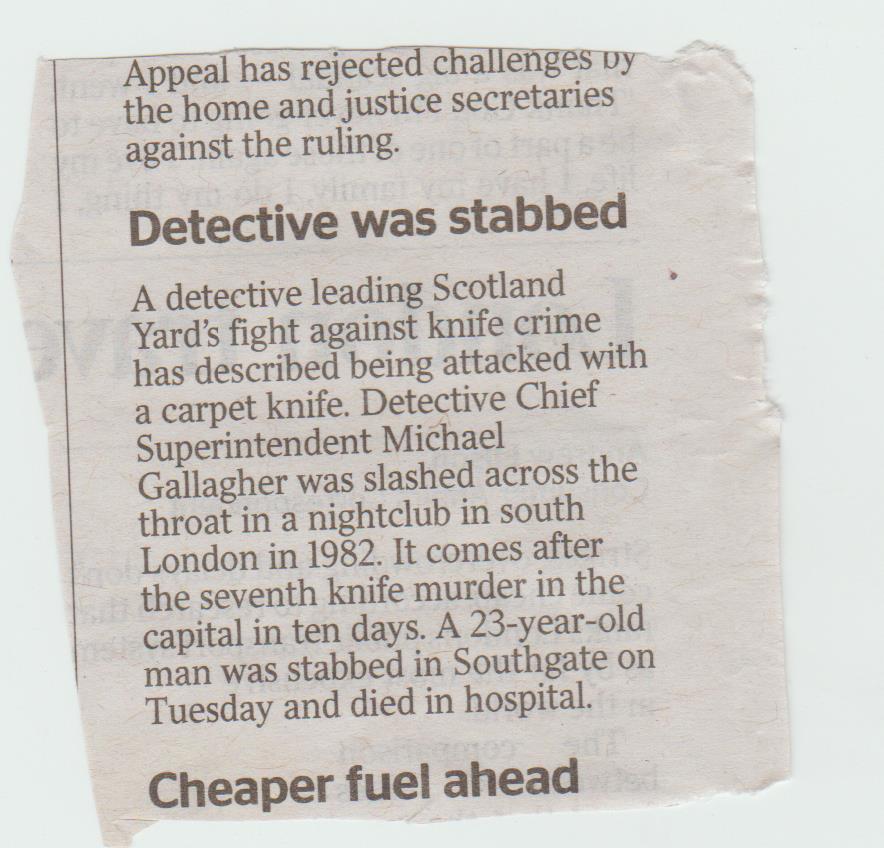 The Times, May 4, 2016
The Times, May 4, 2016
What on earth is this about? I presume it was a much longer story which someone decided to reduce to a short. It would have been better to spike it than turn it into gibberish like this.
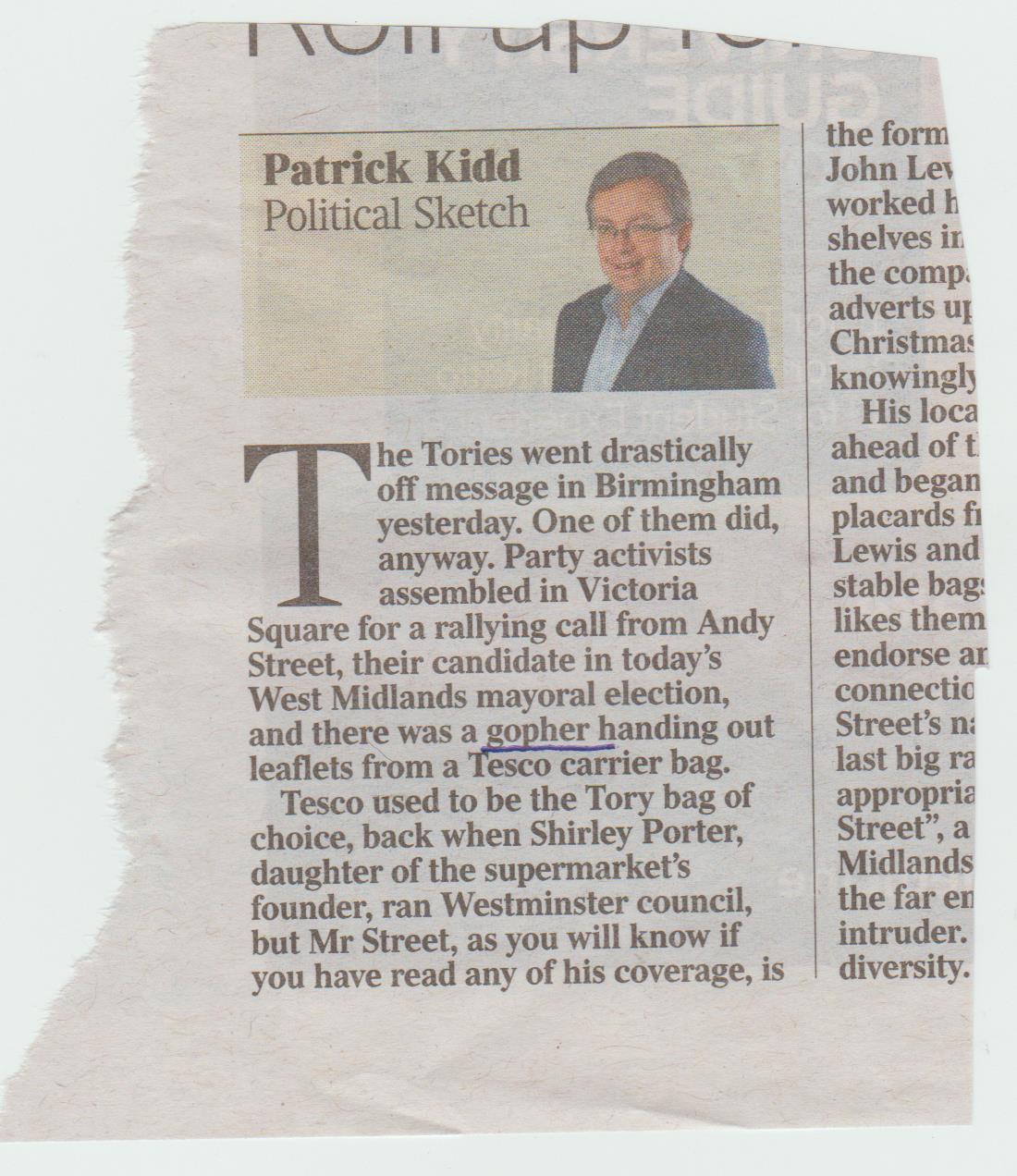 The Times, May 4, 2017
The Times, May 4, 2017
It’s a charming image – a small furry rodent handing out leaflets. However the word should be the informal ‘gofer’, meaning someone who is asked to ‘go for’ things, or a dogsbody.
And from the same piece:
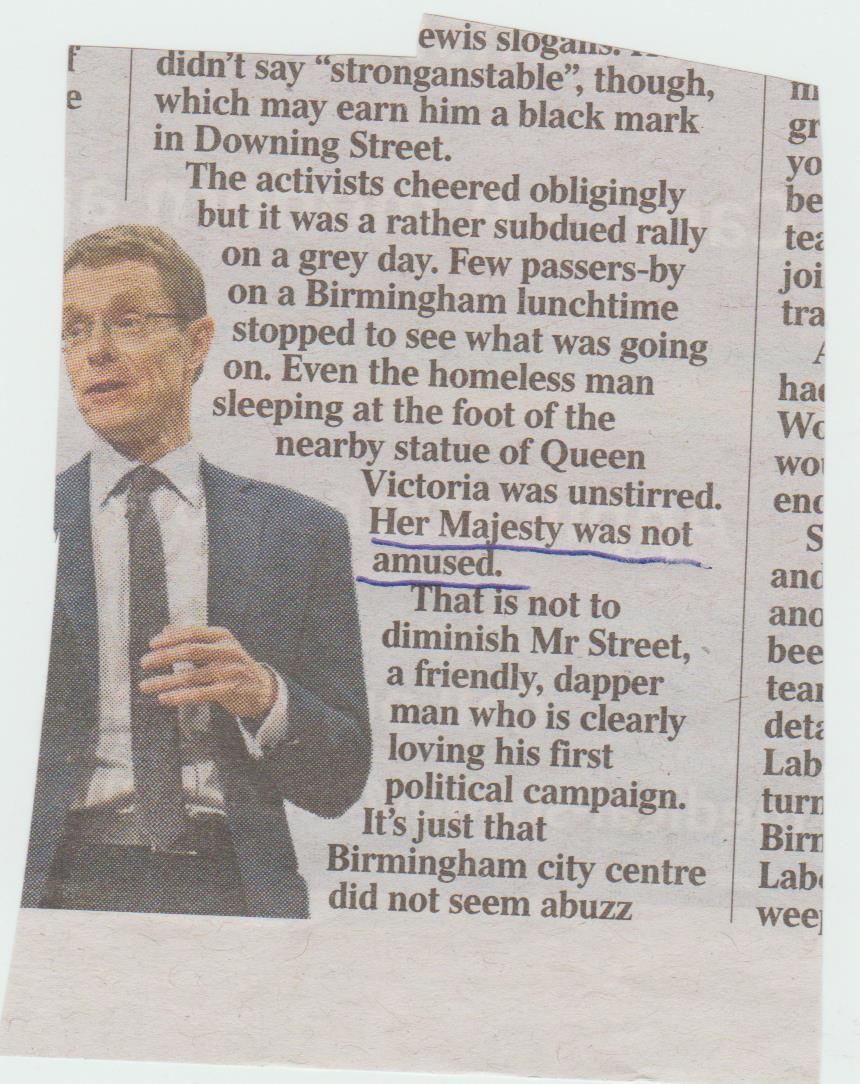
Oh dear. One of the all-time great cliches.
Paterson, of Altrincham, Greater Manchester, was granted bail and is due to be sentenced in May.
BBC News Online, April 28, 2017
Given that this is April, it should say ‘next month’, not ‘May’.
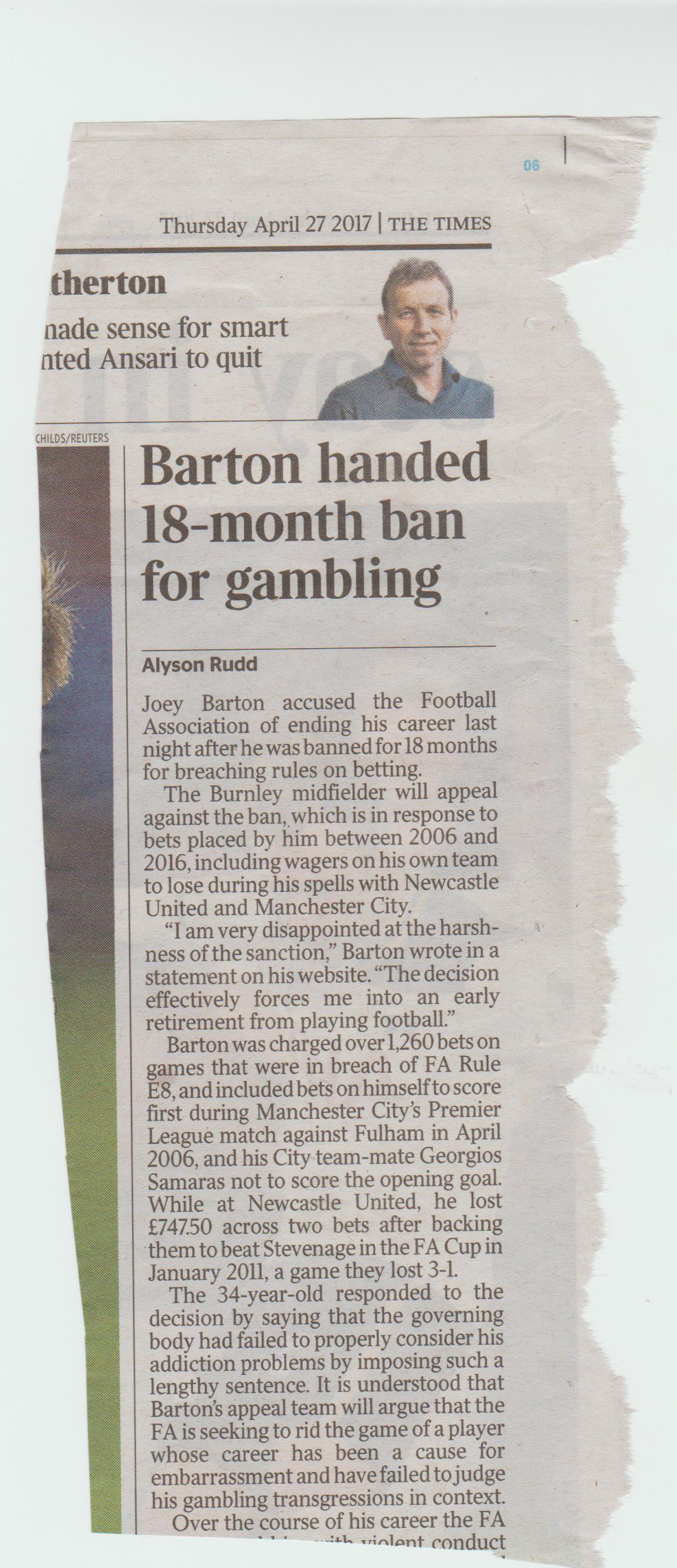 The Times, April 27, 2017
The Times, April 27, 2017
After reading the intro, the average reader will be thinking: ‘Why will his footballing career be finished if he is banned for 18 months? Oh, he must be getting on a bit. So how old is he?’ But you have to wait until the fifth par to learn that he is 34. You should not leave the reader asking questions. In this case, all that is needed is to say in the second par ‘the 34-year-old Burnley midfielder’.
 The Times, April 26, 2017
The Times, April 26, 2017
I have seen this odd expression a few times lately. You can either ‘set foot’ on something, or ‘step’ on to it. ‘Step foot’ is gibberish.
I don’t think you can have an ‘amount’ of photographers. The right word is ‘number’.